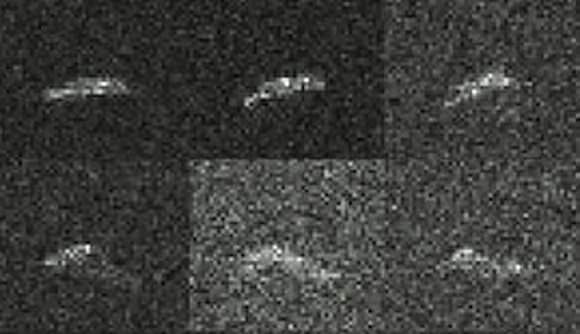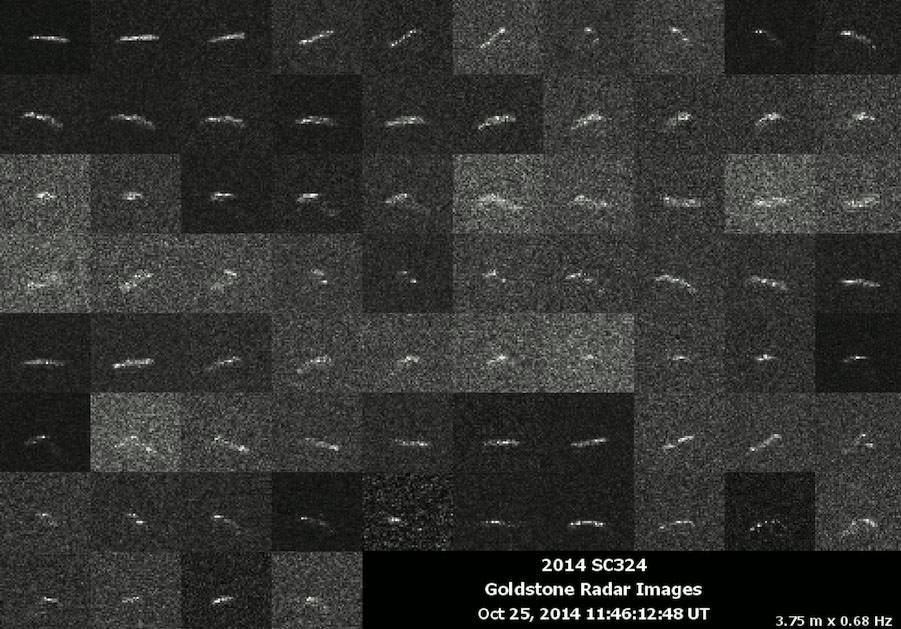Looks like we dodged a bullet. A bullet-shaped asteroid that is. The 70-meter Goldstone radar dish, part of NASA’s Deep Space Network, grabbed a collage of photos of Earth-approaching asteroid 2014 SC324 during its close flyby last Friday October 24. These are the first-ever photos of the space rock which was discovered September 30 this year by the Mt. Lemmon Survey. The level of detail is amazing considering that the object is only about 197 feet (60-meters) across. You can also see how incredibly fast it’s rotating – about 30-45 minutes for a one spin.

In the cropped version, the shape is somewhat clearer with the asteroid appearing some four times longer than wide. 2014 SC324 belongs to the Apollo asteroid class, named for 1862 Apollo discovered in 1932 by German astronomer Karl Reinmuth. Apollo asteroids follow orbits that occasionally cross that of Earth’s, making them a potential threat to our planet. The famed February 15, 2013 Chelyabinsk fireball, with an approximate pre-atmospheric entry size of 59 feet (18-m), belonged to the Apollo class.

Lance Benner and colleagues at Goldstone also imaged another Apollo asteroid that passed through our neighborhood on October 19 called 2014 SM143. This larger object, estimated at around 650 feet (200-m) across, was discovered with the Pan-STARRS 1 telescope on Mt. Haleakala in Hawaii on September 17. Tell me we’re not some shiny ball on a solar system-sized pool table where the players fortunately miss their shot … most of the time.


It seems that NASA & JPL have in the past taken such collages of radar “images” and put them together to create a 3-D model of a space rock. These images are pretty crude but they have plenty of them. I suspect that a quite good model could be made. 70 meter rock – it appears 10 meter resolution might be possible, maybe better. Having written some nifty transformation algorithms, I’d love tackling this problem. These rocks can have complex rotations – rotation over 2 or 3 axii. There may be or may not be, code that could take these images and extract the spin rates for all axii. One spin rate at a time – an approach. Crude images – not easy. The spin rate quoted may only be for one prominent axis. Also, the radar images have bright spots that might represent regolith with high metal content.
“Only about 197 (60 Meters)”! Meteor Crater was the result of a space rock only 50 meters across!! Glad it missed!!